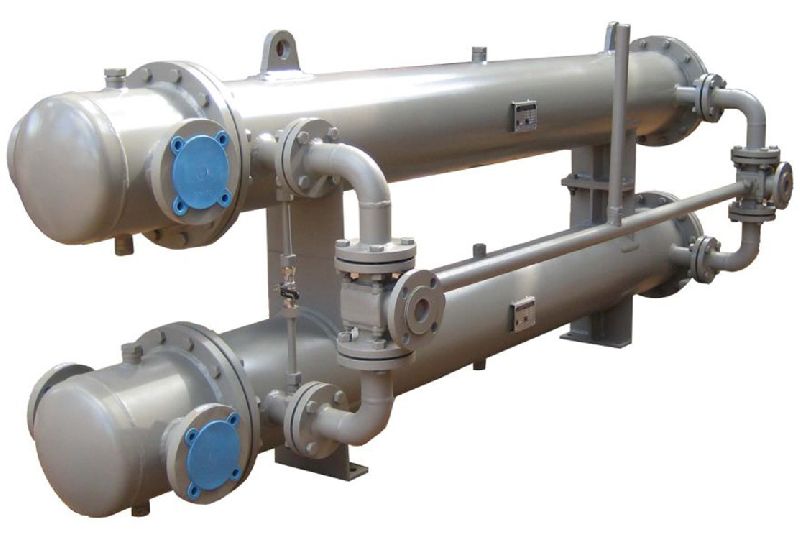Introduction
Lube oil coolers is a type of heat exchanger used to cool lubricating oil in mechanical systems, such as engines, turbines, compressors, gearboxes, and hydraulic systems. Its primary function is to maintain the optimal temperature of lube oil to ensure proper lubrication, viscosity stability, and to prevent thermal degradation of the oil.
The oil absorbs heat while lubricating moving parts. If not cooled, the oil will overheat, lose viscosity, oxidize, and fail to lubricate, which can result in equipment wear, breakdowns, or even catastrophic failure.
Working Principle
Lube oil coolers work based on the heat exchange principle. They transfer heat from hot lubricating oil to a cooling medium (either air or water) without allowing the fluids to mix.
Step-by-Step Process:
- Hot lubricating oil from the engine or machine enters the cooler.
- It flows over or through the heat transfer surfaces (plates or tubes).
- Cooling water or air simultaneously flows on the opposite side of the surface.
- Heat is transferred from the oil to the cooling fluid through conduction.
- Cooled oil exits and is returned to the lubrication system.
Why it matters:
- Lubricants must operate within safe temperature ranges (typically 40°C to 90°C).
- Overheated oil degrades, thickens, and loses its lubricating properties.
- Lube oil cooling ensures machine reliability, performance, and extended component life.
Types of Lube Oil Coolers
Shell and Tube Lube Oil Cooler
- Consists of a bundle of tubes inside a cylindrical shell.
- Oil usually flows through the shell side, while water flows inside the tubes.
- Robust, durable, and efficient for large industrial machinery.
Used in: Power plants, marine engines, turbines.
Plate Type Lube Oil Cooler
- Consists of multiple thin metal plates arranged in a stack.
- Hot oil and cooling water flow through alternate channels.
- Offers high efficiency and compact design.
Used in: Hydraulic systems, compressors, food and pharmaceutical machinery.
Air Cooled Lube Oil Cooler
- Uses ambient air as the cooling medium.
- Oil passes through finned tubes, cooled by forced air (fans).
- Requires no water, ideal for remote or mobile applications.
Used in: Mobile equipment, off-road vehicles, construction machinery.
Double Pipe (Tube-in-Tube) Cooler
- One pipe is nested inside another; oil flows in one and cooling water in the other.
- Simple and easy to clean, suitable for lower flow rates.
Used in: Small hydraulic units, skid-mounted systems.
Limitations
- Fouling and clogging can occur with dirty or contaminated fluids.
- Corrosion risk if improper materials are selected.
- Requires regular cleaning and maintenance to retain performance.
- Air-cooled types may struggle in high ambient temperatures.
- Initial cost may be higher than simple fin-coil coolers.
- Space requirements for shell-and-tube types in compact setups.
Selection Criteria
- Required cooling capacity (kW or BTU/hr)
- Type and viscosity of lubricating oil
- Oil and cooling medium flow rates
- Available space for installation
- Water or air availability
- Temperature and pressure ratings
- Cleanliness and contamination level of fluids
- Ease of maintenance and access
Conclusion
Lube oil coolers play a critical role in preserving the performance, reliability, and lifespan of mechanical systems by maintaining the optimal temperature of lubricating oil. By efficiently dissipating excess heat from engines, turbines, gearboxes, compressors, and hydraulic systems, they help prevent oil degradation, ensure consistent viscosity, and reduce wear on components.
With various designs like shell and tube, plate type, and air-cooled models available, lube oil coolers can be tailored to a wide range of industrial and mobile applications. Proper selection based on application needs, flow rates, and cooling capacity — along with regular maintenance — ensures peak operational efficiency and long-term equipment protection.

